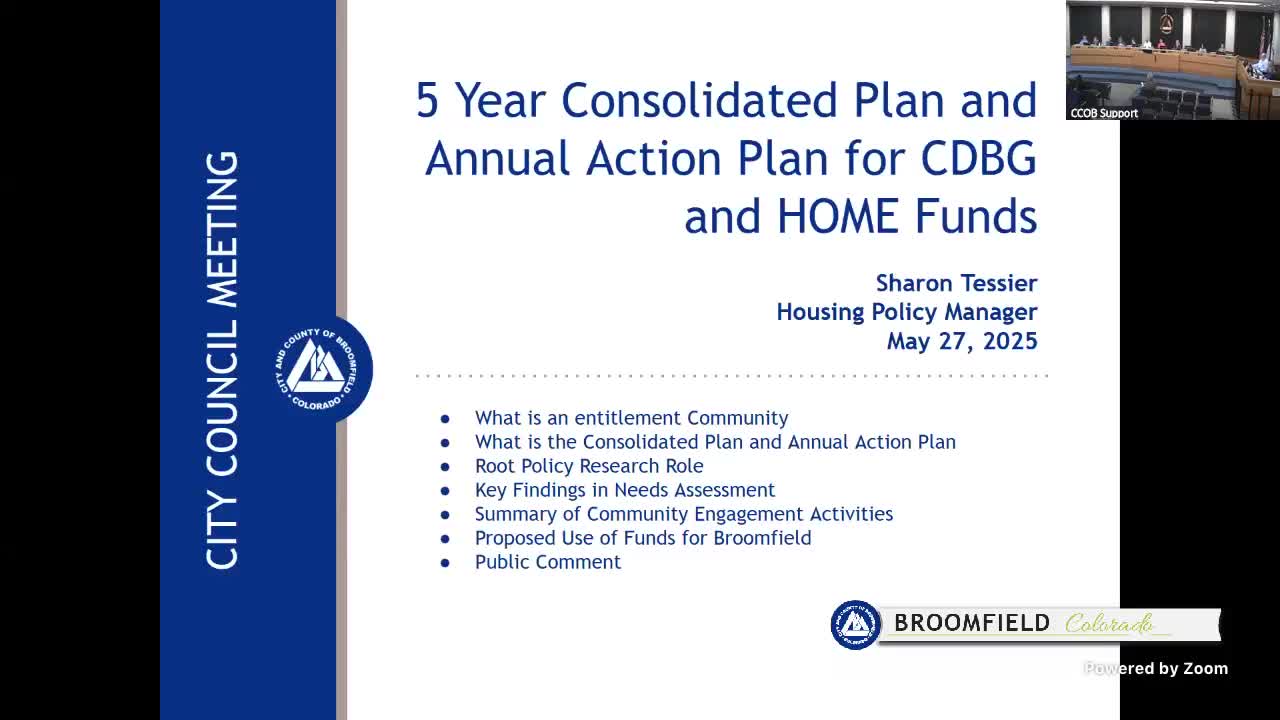Broomfield housing plan addresses affordability and rental assistance funding
May 28, 2025 | Broomfield County, Colorado
Thanks to Scribe from Workplace AI , all articles about Colorado are free for you to enjoy throughout 2025!

This article was created by AI using a video recording of the meeting. It summarizes the key points discussed, but for full details and context, please refer to the video of the full meeting. Link to Full Meeting
The meeting began with a nod to Root Policy, a research organization instrumental in developing the city’s five-year consolidated plan and annual action plan. These plans are essential for Broomfield to qualify for federal funding from the U.S. Department of Housing and Urban Development (HUD), which designates the city as an eligible entitlement community. This designation allows Broomfield to receive approximately $110,000 in HOME Investment Partnership funds and $250,000 in Community Development Block Grant (CDBG) dollars annually.
These funds are vital for various initiatives, including tenant-based rental assistance, home rehabilitation programs, and support for small businesses. The city has consistently allocated these resources to address housing stability and community development, particularly for vulnerable populations. Notably, the CDBG funds are directed towards revitalizing neighborhoods, expanding affordable housing, and improving community facilities.
During the session, officials shared insights from a recent survey conducted by Root Policy, which received 573 responses, with nearly half coming from Broomfield residents. Alarmingly, 18% of respondents reported difficulties in paying rent or mortgages. The survey underscored the growing cost burden on renters, with 50% of those earning up to 80% of the area median income struggling to afford housing. The average rent for a one-bedroom apartment in Broomfield has soared to $2,300, exacerbating the housing crisis.
The discussions also revealed a widening gap in homeownership opportunities for lower and middle-income families. The once-accessible starter homes are now priced between $400,000 and $600,000, pushing many potential buyers out of the market. City officials acknowledged the need for a diverse range of housing types to meet the demands of the community.
As the meeting progressed, the council emphasized the importance of community engagement and the need for targeted programs to assist vulnerable populations, including low-income families, seniors, and individuals with eviction records. The challenges of maintaining housing stability for those recently housed were also highlighted, with officials noting the necessity of ongoing support services.
Looking ahead, the city plans to continue utilizing federal funds for home rehabilitation and small business grants, aiming to foster economic development and improve living conditions for all residents. The council's commitment to addressing these pressing issues reflects a broader understanding of the complexities surrounding housing in Broomfield, as they strive to create a more inclusive and supportive community for everyone.
Converted from City Council Sessions meeting on May 28, 2025
Link to Full Meeting
Comments
View full meeting
This article is based on a recent meeting—watch the full video and explore the complete transcript for deeper insights into the discussion.
View full meeting